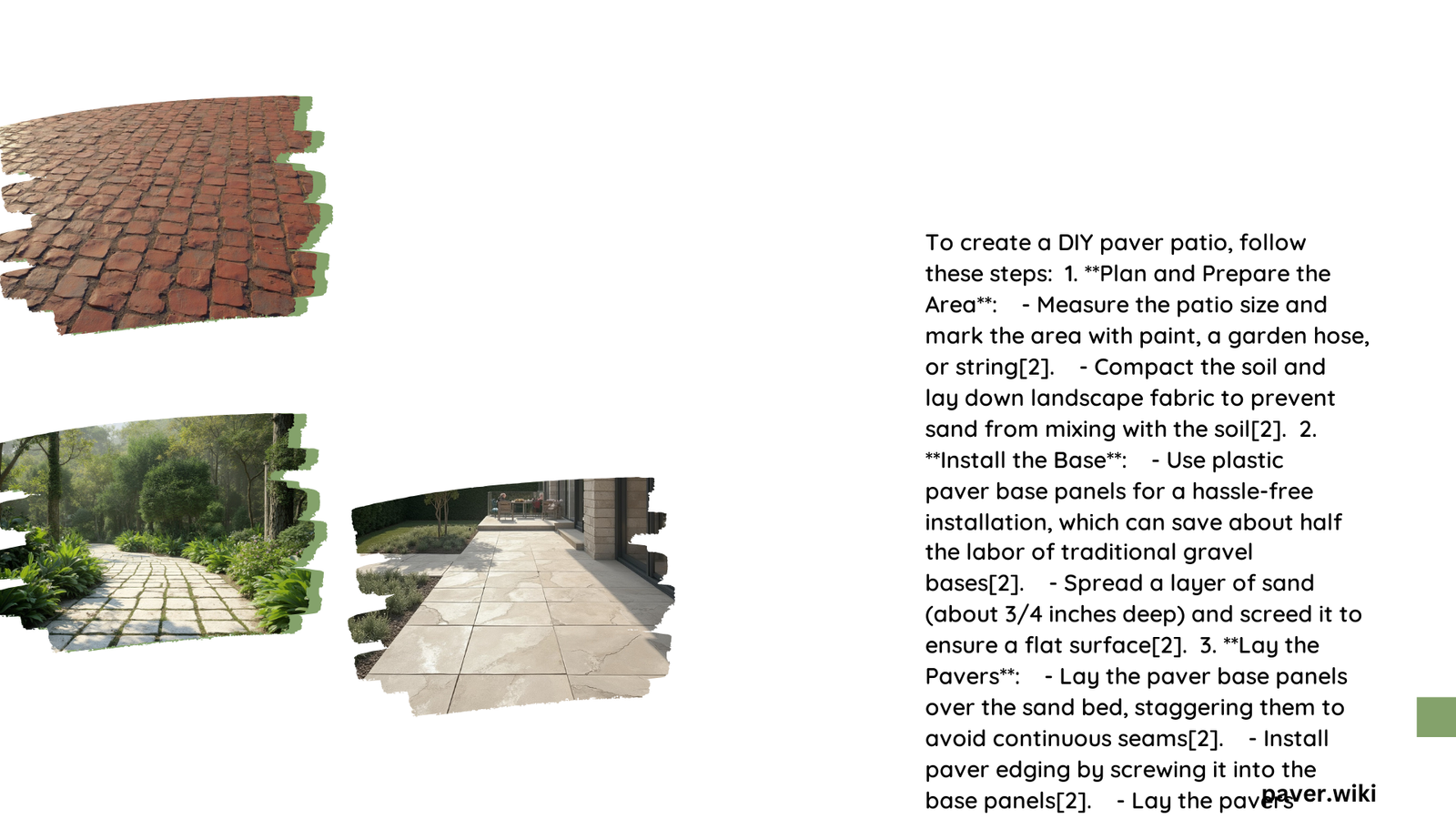Do it yourself magazine pavers offer a cost-effective and creative way to enhance outdoor spaces. This guide covers various types of pavers, installation techniques, design ideas, and maintenance tips for DIY enthusiasts. From concrete to natural stone, learn how to transform your patio, driveway, or walkway with step-by-step instructions and innovative patterns.
What Are the Different Types of Pavers Available for DIY Projects?
DIY paver projects offer a wide range of options to suit various tastes and applications. Here’s a breakdown of the most common types:
- Concrete Pavers
- Durable and versatile
- Available in various shapes, sizes, and colors
- Ideal for driveways, patios, and walkways
-
Typical thicknesses: 60 mm for pedestrian areas, 80 mm for vehicular use
-
Natural Stone Pavers
- Materials include limestone, travertine, bluestone, and flagstone
- Offer natural beauty and durability
-
Suitable for patios and walkways
-
Brick Pavers
- Made from clay or concrete
- Classic look with various color options
-
Durable and traditional
-
Porcelain Tile Pavers
- Dense and low porosity
- Highly durable for heavy-use areas
-
Ideal for patios, walkways, and pool surrounds
-
Rubber Pavers
- Eco-friendly, made from recycled tires
- Shock-absorbent
- Perfect for play areas and comfortable outdoor spaces
How to Install Pavers as a DIY Project?

Installing pavers can be a rewarding DIY project. Follow these steps for a successful installation:
Preparation Steps
- Clear the area of debris and vegetation
- Mark project boundaries with stakes and string
- Lay down a compacted base layer of coarse aggregate
- Spread and level a sand layer over the base
Installation Steps
- Lay the first paver along the marked boundary
- Continue laying pavers, using spacers for consistent joint widths
- Use a level and rubber mallet to ensure even placement
- Cut pavers as needed to fit edges or obstacles
- Spread sand over the pavers and sweep into joints
- Compact the pavers using a plate compactor or hand tamper
Necessary Tools
- Shovel and rake
- Level and rubber mallet
- Saw or paver cutter
- Plate compactor or hand tamper
- Sand and coarse aggregate material
Estimated Timeframes
| Project Size | Estimated Duration |
|---|---|
| Small Patio | 1-3 days |
| Medium Driveway | 3-5 days |
| Large Walkway | 2-4 days |
What Are Some Innovative Paver Design Ideas?
Get creative with your paver project by exploring these design ideas:
Patterns
- Stack Bond: Simple, straight lines – ideal for beginners
- Running Bond: Half-offset pattern, structurally sound for driveways
- Herringbone: Zigzag pattern, best for high-traffic areas
- Basketweave: Alternating pairs of pavers for a stunning effect
Color Combinations
- Contrast light field pavers with dark borders
- Use natural stone colors for a cohesive look
Layout Techniques
- Modular patterns using multiple stone sizes
- Permeable pavers for improved drainage
How to Maintain DIY Paver Projects?
Proper maintenance ensures the longevity of your paver project:
Frequency of Maintenance Tasks
- Regular cleaning: Sweep and rinse periodically
- Sealing: Every 3-5 years for concrete pavers (optional but recommended)
Recommended Products
- High-quality paver sealant
- Mild detergents or specialized paver cleaners
Techniques for Prolonging Lifespan
- Regular compaction to maintain stability
- Maintain sand joints to prevent shifting and erosion
By following these guidelines, your DIY paver project can provide years of beauty and functionality to your outdoor space.
